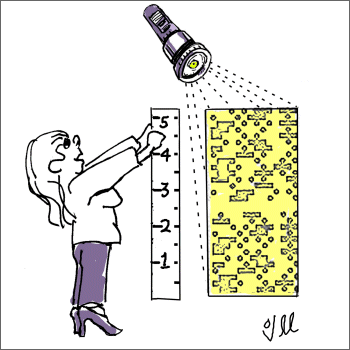Making Intensity Measurements
Intensity measurements should be performed on uniformly processed image data, and the data should be calibrated to a known standard.

- Intensity measurements are difficult to perform in an appropriately rigorous and scientific manner.
- Many variables must be considered and controlled for, before the data can be regarded as meaningful. This would include things like the uniformity of sample preparation techniques, as well as optical aberrations and electronic noise to name a few.
- Intensity measurements would include the analysis of colocalization data, which is essentially the comparison of intensity data from two different wavelengths.
- Unfortunately, many publications do not provide sufficient detail to reassure the reader that the intensity data were correctly gathered and interpreted.
- A particular difficulty with intensity measurements is the need for a robust and repeatable standard to calibrate or normalize the data. Unfortunately appropriate standards are not always available for purchase. Developing home-made standards is not a trivial task.
- Intensity measurements of light-absorbing materials (also known as densitometry) are typically more straight-forward to perform than measurements of light-emitting materials (i.e., fluorescence). This is because light-absorbing materials (i.e., DAB staining used in immunohistochemistry) do not change intensity appreciably after exposure to light.
- Light-emitting materials, such as fluorescent dyes, are prone to fading after exposure to light, making them difficult to use when measuring intensity values.
- The many types of microscopes that are used to capture fluorescence images are subject to a number of known fluctuations over time, as well as other physics/electronics limitations. Scientists who are unaware of, or cannot account or control for, the limitations of the acquisition instrument, should not perform intensity measurements.
- In general, intensity measurements should be performed on raw data to avoid potential artifacts.
- If normalization, calibration, or any other image processing is performed on the data, it should be performed uniformly across all the data, and the procedures should be carefully described in the methods section of the publication.
- Scientists should be extremely cautious about using software filters on digital images that will be used for intensity measurements
- Software filters may introduce unexpected artifacts in the images (see guideline #7), possibly leading to the measurement of artifacts rather than real data.
|

